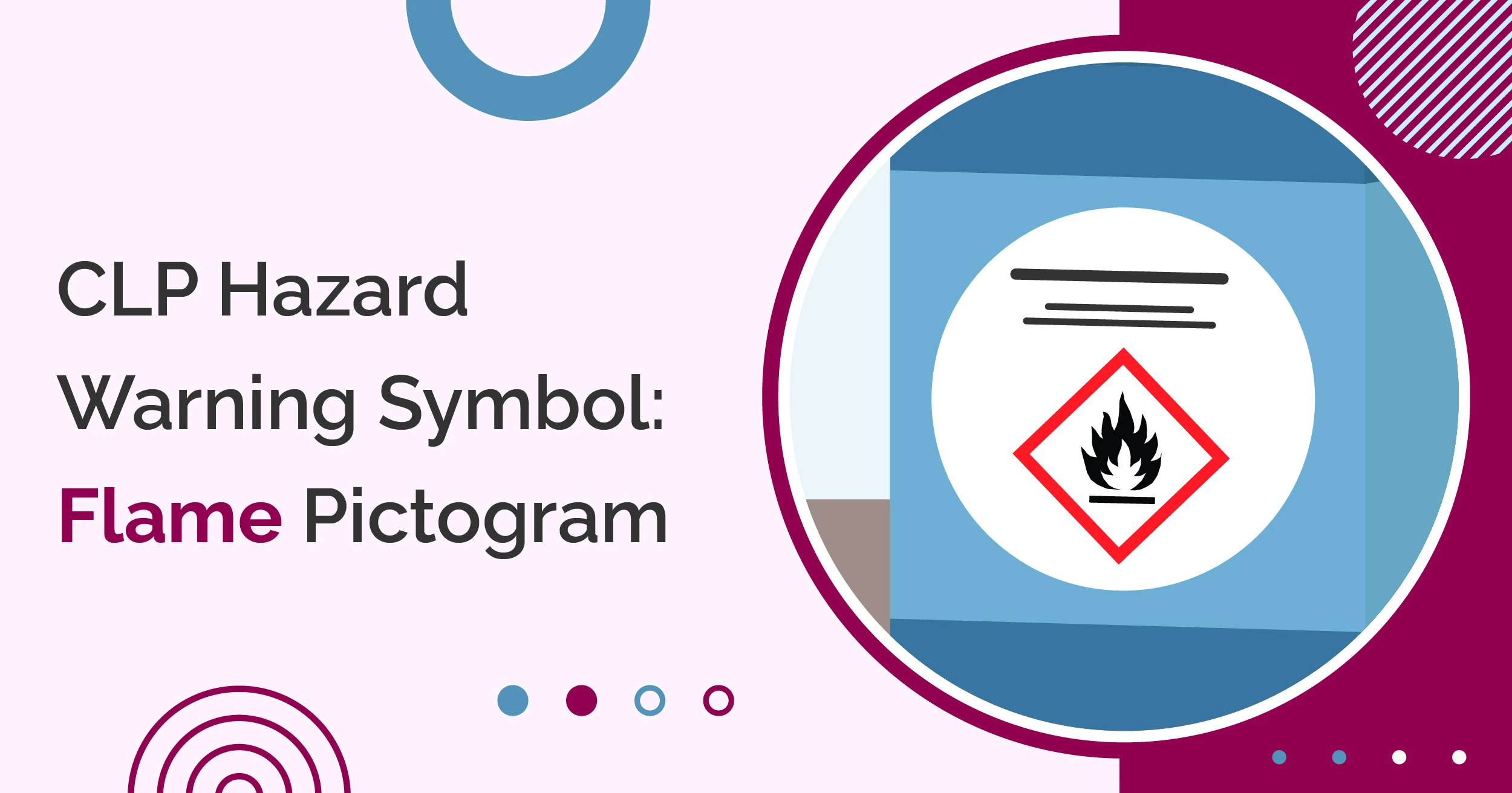Whether you already handle flammable products or are simply interested in learning more about the necessary safety precautions, this blog post will provide you with valuable insights to protect yourself and others from potential hazards.
What does the flame pictogram mean?

What are flammable substances?
Products marked with a flame pictogram are fire and explosion hazards in the workplace. For a fire to happen, you need three things: fuel (like the flammable product), oxygen, and heat (an ignition source, like a spark). It is crucial to prevent these three elements from coming together in the right amounts.
There are other dangers too:
- Static electricity: It is generated when things rub together. With flammable liquids, pouring, pumping, or even stirring can create static electricity that might ignite the product.
- Flashback: The vapor of most flammable liquids is heavier than air, so it can spread along the ground. If it reaches a spark or heat source, it can travel back to the liquid source and cause an explosion.
- Toxic gases: When flammable products burn, they can produce harmful gases like carbon monoxide and nitrogen oxides. So, fires involving these products can be especially dangerous.
Physical hazard classes represented by the flame pictogram
We will look at each of these twelve hazard classes in turn in relation to signal words, hazard statements and hazard codes.

The implications of flammable substances
These flammable materials do not just start fires; they can also make other dangerous materials explode. When the gas from flammable materials burns, it can produce a lot of heat and thick, poisonous smoke, which can be harmful to human health.
Always consult the Safety Data Sheet (SDS) and product CLP label to thoroughly understand the risks associated with the specific product you are working with. When in doubt, seek clarification and ask questions to ensure safety.
Protective measures for flammable substances
To safely handle products marked with the flame pictogram, follow these guidelines:
- Review safety information: Always review the Safety Data Sheet (SDS) for comprehensive hazard information and precautions. Seek clarification if unsure.
- Consider substitutes: If possible, replace hazardous products with less dangerous alternatives.
- Prevent release: Prevent the release of flammable substances into the air.
- Minimise inhalation risk: Use products in well-ventilated spaces and keep containers tightly sealed.
- Minimise use: Use the minimum amount required for the task.
- Avoid potential ignition sources: Avoid heat, sparks, open flames, and smoking. Ensure no hot work is conducted nearby. For aerosols, avoid spraying near flames, and do not puncture or burn them.
- Safe handling: When handling volatile flammable liquids, use non-sparking tools and explosion-proof equipment. Prevent static discharges.
- Personal protective equipment: Wear appropriate protective gear and ensure workers are trained in its use and maintenance.
- Safe storage: Follow specific storage instructions for self-reactive, pyrophoric, and water-reactive products.
- Avoid incompatible conditions: Be mindful of conditions to avoid, such as air, water, moisture, temperature, pressure, friction, and sunlight.
- Personal hygiene: Prevent contamination of skin or clothing, wash skin and clothing thoroughly if contamination does occur.
- Container handling: Do not perform hot work on empty containers until they are thoroughly cleaned.
- Safety awareness: Prevent spills and report leaks, spills, or equipment failures promptly.
- Workplace hygiene: Remove combustible materials from the area and dispose of them properly. Maintain clean work areas and promptly clean up spills and residues to prevent contact with skin or incompatible materials.
Safe storage for flammable substances
- Storage equipment: Use specialised flammable storage equipment like flammable storage fridges, cabinets, or safety cans.
- Limit quantity: Limit the quantity stored, avoiding excess stockpile.
- Warning signs: Clearly post warning signs in storage areas.
- Regular inspection: Regularly inspect containers and storage spaces for leaks or damage, using compatible trays to contain spills.
- Ventilation: Ensure proper ventilation and maintain a cool storage environment.
- Avoid direct sunlight: Shield aerosols and organic peroxides from direct sunlight.
- Temperature control: Avoid exposing aerosols to temperatures over 50°C (122°F).
- Follow supplier recommendations: Store organic peroxides, self-reactive, and self-heating products within supplier-recommended temperature ranges, keeping them separate.
- Storage conditions: Maintain air gaps between stacks or pallets of self-heating products.
- Container advice: Store products reacting with water in dry, closed containers.
- Avoid incompatible materials: Keep away from incompatible materials, consulting the SDS for guidance.
- Safety equipment: Have suitable firefighting and spill cleanup equipment readily available.
- Storage location: Prefer ground floor storage over basements for better emergency access.
- Regulatory compliance: Adhere to relevant health and safety regulations, fire codes, and building codes.
Conclusion
By acknowledging the potential risks associated with flammable substances, such as fire and explosion hazards, and implementing appropriate safety measures, we create a safer working environment for employees and minimise the possibility of accidents. Storing, transporting, and handling these products in accordance with the flame pictogram guidelines is essential to protect not only employees but also customers and the environment.

